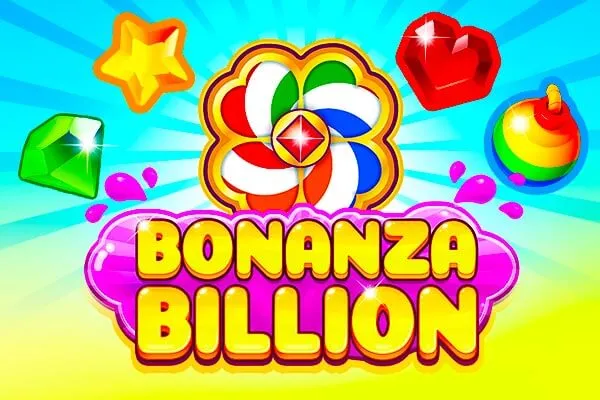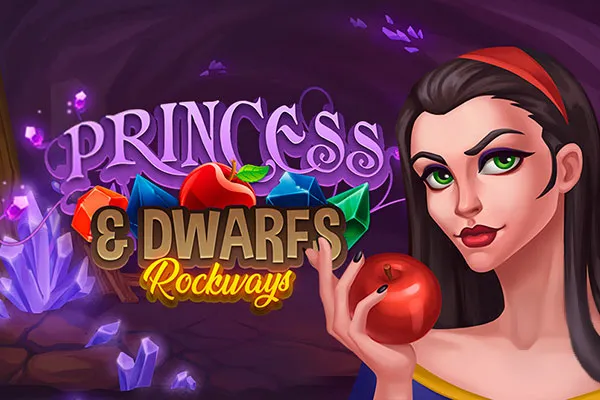Bangla Calendar: A Comprehensive Guide to the Bengali Year
The Bangla Calendar, also known as the Bengali calendar or Bangla Pôñjika (বাংলা পঞ্জিকা), is a lunisolar calendar used in Bangladesh and parts of India, particularly West Bengal, Tripura, and Assam. More than just a system for tracking days, the Bangla Calendar is deeply intertwined with Bengali culture, agriculture, festivals, and social life. This comprehensive guide will delve into the intricacies of the Bangla Calendar, exploring its history, structure, significance, and how it's used in modern-day India and Bangladesh.
Understanding the Reader Intent
When searching for "Bangla Calendar," users typically seek information on:
- The current date in the Bangla Calendar.
- Bangla Calendar dates corresponding to Gregorian dates.
- Upcoming festivals and holidays according to the Bangla Calendar.
- The history and origins of the Bangla Calendar.
- Online Bangla Calendar resources.
- The significance of the Bangla Calendar in Bengali culture.
- Regional variations in the Bangla Calendar.
This article aims to address all these needs, providing a complete and informative resource about the Bangla Calendar.
A Journey Through Time: The History of the Bangla Calendar
The origins of the Bangla Calendar are debated among scholars, but several theories prevail:
The Sena Dynasty Connection: One prominent theory suggests that the Bangla Calendar was introduced by the Sena dynasty ruler, King Shashanka, in the 7th century AD. This theory links the start of the Bengali year to Shashanka's reign.
Mughal Influence: Another theory attributes the calendar's development to the Mughal Empire. During Mughal rule, land revenue was collected according to the Islamic Hijri calendar, which is a lunar calendar. This created difficulties for agricultural cycles, as the Hijri year is shorter than the solar year. To address this, Emperor Akbar commissioned the creation of a new calendar that aligned with the agricultural seasons. This Fasli San (agricultural year) is considered a possible precursor to the modern Bangla Calendar.
A Synthesis of Traditions: It's likely that the Bangla Calendar evolved through a synthesis of existing calendar systems, including solar and lunar calendars, influenced by both Hindu and Islamic traditions.
Regardless of its precise origin, the Bangla Calendar has undergone several reforms over time to improve its accuracy and alignment with the solar year.
Deconstructing the Bangla Calendar: Structure and Components
The Bangla Calendar is a lunisolar calendar, meaning it incorporates elements of both lunar and solar calendars. Here's a breakdown of its key components:
Years: The Bangla Calendar year begins with Boishakh (বৈশাখ), typically around mid-April in the Gregorian calendar. The year numbering follows the Bangabda (বঙ্গাব্দ) era. As of 2024, the Bangla Calendar year is 1431.
Months: The Bangla Calendar consists of twelve months, each named after astronomical phenomena or natural elements:
- Boishakh (বৈশাখ)
- Joishtho (জ্যৈষ্ঠ)
- Asharh (আষাঢ়)
- Shrabon (শ্রাবণ)
- Bhadro (ভাদ্র)
- Ashwin (আশ্বিন)
- Kartik (কার্তিক)
- Agrahayan (অগ্রহায়ণ)
- Poush (পৌষ)
- Magh (মাঘ)
- Falgun (ফাল্গুন)
- Choitro (চৈত্র)
Days: The days of the week in the Bangla Calendar are similar to those in other Indian calendars, named after celestial bodies:
- রবিবার (Robibar) - Sunday
- সোমবার (Sombar) - Monday
- মঙ্গলবার (Mangalbar) - Tuesday
- বুধবার (Budhbar) - Wednesday
- বৃহস্পতিবার (Brihaspatibar) - Thursday
- শুক্রবার (Shukrabar) - Friday
- শনিবার (Shanibar) - Saturday
Seasons: The Bangla Calendar is closely linked to the six seasons prevalent in the Bengali region: Grishma ( গ্রীষ্ম) (Summer), Barsha (বর্ষা) (Monsoon), Sharath (শরৎ) (Autumn), Hemanta (হেমন্ত) (Late Autumn), Sheet (শীত) (Winter), and Basanta (বসন্ত) (Spring). These seasons play a significant role in agriculture and cultural celebrations.
The Revised Bangla Calendar: Addressing Inconsistencies
Historically, the length of the months in the Bangla Calendar was inconsistent. To address this, a calendar reform committee, led by Dr. Muhammad Shahidullah, was formed in Bangladesh in 1966. The reforms aimed to make the calendar more accurate and consistent with the solar year.
The revised calendar, officially adopted in Bangladesh in 1987, standardized the length of the first five months (Boishakh to Bhadro) to 31 days each. The remaining seven months are 30 days long, except for Falgun, which has 29 days in regular years and 30 days in a leap year. The leap year is synchronized with the Gregorian calendar; if February has 29 days, Falgun also has 30.
In India, West Bengal follows a slightly older version of the Bangla Calendar, which doesn't fully incorporate these reforms. This can lead to slight variations in festival dates between Bangladesh and West Bengal.
Significance of the Bangla Calendar in Bengali Culture
The Bangla Calendar is more than just a way to track time; it's an integral part of Bengali culture and identity.
Agriculture: The calendar's alignment with the agricultural seasons makes it crucial for farmers in Bangladesh and West Bengal. Planting and harvesting cycles are often determined based on the Bangla Calendar.
Festivals and Celebrations: Many important Bengali festivals are celebrated according to the Bangla Calendar. Pohela Boishakh (পহেলা বৈশাখ), the Bengali New Year, is the most prominent example. Other festivals include Durga Puja, Kali Puja, and Holi, although the exact dates can sometimes vary depending on regional interpretations of the calendar.
Social Events: The Bangla Calendar is used to determine auspicious dates for weddings, religious ceremonies, and other social events.
Literature and Arts: The changing seasons, as reflected in the Bangla Calendar, have inspired countless works of Bengali literature, music, and art.
Using the Bangla Calendar in India
In India, particularly in West Bengal, Tripura, and Assam, the Bangla Calendar holds significant cultural importance. While the Gregorian calendar is used for official purposes, the Bangla Calendar is widely used for:
Determining Festival Dates: As mentioned earlier, the Bangla Calendar dictates the dates of many major festivals, including Durga Puja, which is the most important festival for Bengali Hindus.
Religious Observances: Many religious rituals and ceremonies are performed according to the Bangla Calendar.
Cultural Events: Cultural events, such as music concerts, dance performances, and theatrical productions, are often scheduled based on auspicious dates in the Bangla Calendar.
Traditional Businesses: Many traditional businesses, particularly those related to agriculture and handicrafts, still use the Bangla Calendar for their operations.
Online Resources and Tools for the Bangla Calendar
Several online resources and tools are available to help users track the Bangla Calendar and convert dates between the Bengali and Gregorian calendars:
Bangla Calendar Websites: Numerous websites provide online Bangla Calendars, often with Gregorian date equivalents. These sites may also include information on festivals and holidays.
Mobile Apps: Mobile apps are available for both Android and iOS devices that provide Bangla Calendar functionality, date conversion tools, and festival reminders.
Panjika Software: Traditional Panjikas (almanacs) are also available in digital format, offering detailed astronomical information and auspicious dates.
The Future of the Bangla Calendar
The Bangla Calendar continues to be a vital part of Bengali culture and identity. While the Gregorian calendar is increasingly used for official and international purposes, the Bangla Calendar remains deeply ingrained in the social, religious, and agricultural life of Bengali-speaking communities.
Efforts to standardize and modernize the calendar, such as the reforms in Bangladesh, aim to ensure its continued relevance and accuracy in the 21st century. The increasing availability of online resources and mobile apps makes it easier for people to access and use the Bangla Calendar in their daily lives.
Key Differences Between the Bangla Calendar in India and Bangladesh
While both India and Bangladesh use the Bangla Calendar, there are some key differences:
Calendar Reform: Bangladesh adopted the revised Bangla Calendar in 1987, standardizing the length of the first five months to 31 days. West Bengal in India still largely follows the older version of the calendar, leading to variations in festival dates.
Official Use: In Bangladesh, the revised Bangla Calendar is used for some official purposes, alongside the Gregorian calendar. In India, the Gregorian calendar is the primary calendar for official use.
Festival Dates: Due to the differences in calendar reform, the dates of some festivals may vary slightly between Bangladesh and West Bengal. For example, Pohela Boishakh is celebrated on April 14 in Bangladesh, following the reformed calendar, while in West Bengal, it may sometimes fall on April 15.
Conclusion: A Timeless Tradition
The Bangla Calendar is a testament to the rich cultural heritage of Bengal. Its history, structure, and significance reflect the region's unique blend of agricultural traditions, religious beliefs, and artistic expressions. Whether you're a Bengali speaker or simply interested in learning about different calendar systems, understanding the Bangla Calendar offers a fascinating glimpse into a vibrant and enduring culture. From determining auspicious dates for weddings to marking the start of the harvest season, the Bangla Calendar continues to play a vital role in the lives of millions of people in India and Bangladesh. Its enduring presence is a powerful reminder of the importance of preserving cultural traditions in a rapidly changing world.
Related Pages
- Unlock Affordable Healthcare with Apollo247 – India's Top Online Pharmacy for Instant Medicine Delivery!
- Zen Tech Share Price Today: Live Updates and Expert Analysis for Indian Investors!
- Easy Fairplay4 Login: Secure Access for Indian Users Now!
- Big 91 Club: India's Ultimate Adventure Hub for Thrilling Wins and Exclusive Perks!
- Katchatheevu Island: The Forgotten Indian Territory and Its Shocking Controversy Revealed!









